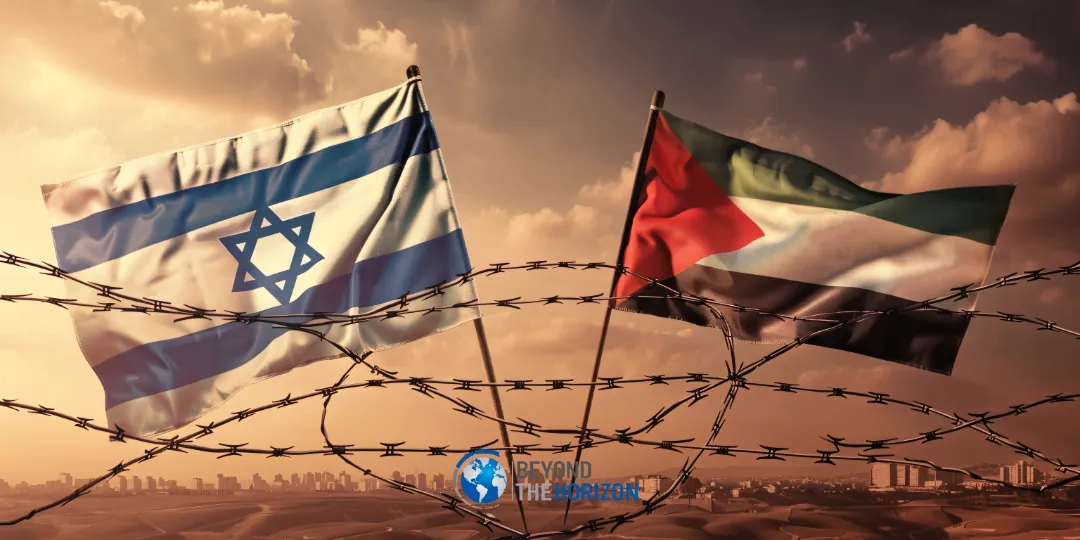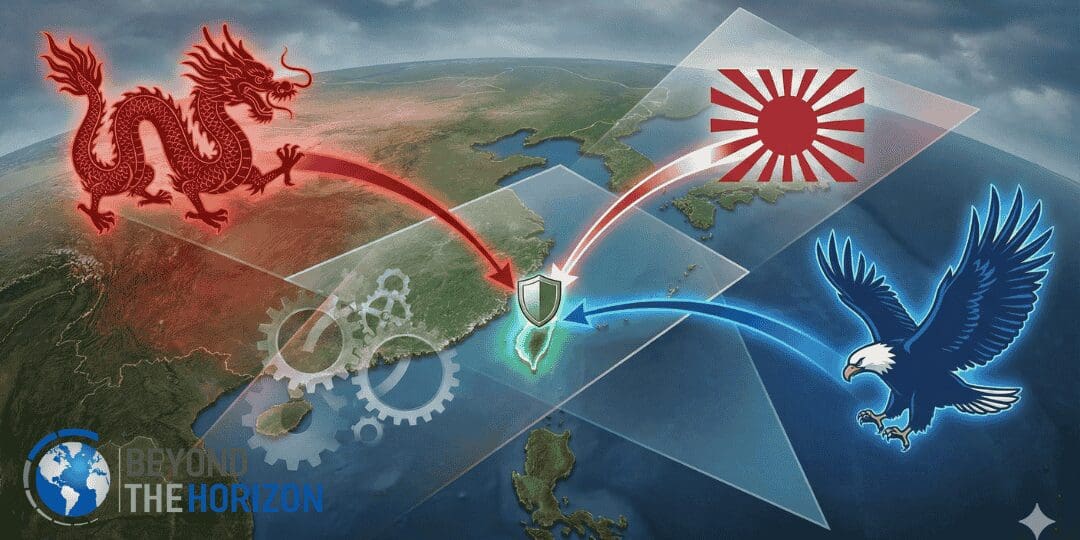Key Takeaways
- Historic Diplomatic Breakthrough: The 2025 Gaza Phased Peace Plan marks the most comprehensive attempt in decades to end hostilities between Israel and Hamas. It reflects unprecedented cooperation among the U.S., Qatar, Egypt, and Türkiye, signaling a shift toward collective regional diplomacy.
- Implementation Defines Success: The plan’s ambition contrasts with its fragility. Genuine disarmament of Hamas, credible governance in Gaza, and consistent Israeli restraint are all prerequisites for lasting peace. Each phase must be verified, enforceable, and mutually incentivized.
- Governance and Legitimacy are Core: Sustainable peace depends not only on security arrangements but also on restoring Palestinian political legitimacy. A technocratic interim authority must transition transparently to a reformed Palestinian Authority capable of holding credible elections and delivering public services.
- Reconstruction as a Strategic Imperative: Humanitarian recovery and economic revival are inseparable from political stabilization. Visible improvements in living standards—through transparent aid delivery and rapid infrastructure repair—are essential for public confidence and the credibility of the peace process.
- Regional and Global Stakes: The agreement repositions the U.S. as a central mediator while empowering regional powers to co-own the peace process. Success could weaken Iran’s regional influence, revive Arab–Israeli normalization, and reenergize prospects for a two-state solution. Failure, conversely, would embolden extremists and fracture regional diplomacy.
- A Defining Moment for Middle East Order: The plan’s outcome will determine whether the region moves toward pragmatic cooperation and post-conflict reconstruction—or reverts to cycles of violence, fragmentation, and external rivalry. Its fate will shape the next chapter of Middle Eastern geopolitics.
Introduction
The phased peace plan for Gaza emerged after two years of devastating conflict between Israel and Hamas. Fighting erupted on October 7, 2023, when Hamas launched a surprise cross-border attack, prompting an Israeli military onslaught on the Gaza Strip. In the ensuing war, Gaza’s 2.3 million residents endured relentless bombardment, a sweeping Israeli ground invasion, and a suffocating siege. The humanitarian situation deteriorated to catastrophic levels: by late 2025, more than 61,000 Palestinians had been killed and over 150,000 injured in Gaza, with 2.1 million people facing extreme hunger amid an official famine declaration in August 2025. Entire city districts lay in ruins, infrastructure collapsed, and essentials like electricity, clean water, and healthcare were scarcely available. United Nations experts warned of “unfolding genocide” as the civilian toll mounted. In Israel, the initial Hamas attack and subsequent fighting killed over 1,400 people, and Hamas fighters abducted dozens of Israeli civilians and soldiers into Gaza, sparking a prolonged hostage crisis.
Multiple efforts to halt the war had faltered. A brief humanitarian ceasefire in November 2023 allowed for limited hostage exchanges but collapsed as fighting resumed. A second ceasefire took hold in January 2025, only to unravel by March. By mid-2025, the conflict ground on with no political solution in sight, and Gaza’s plight spurred worldwide outrage and protests. International and regional actors grew increasingly alarmed at the war’s toll and the risk of a wider conflagration. Indeed, the war had already begun spilling beyond Gaza: in 2024–25 Israel struck Hezbollah in Lebanon and even, with U.S. support, conducted covert strikes on Iran’s nuclear facilities. Tensions spiked further in late September 2025 when Israel reportedly carried out a drone strike in Doha, Qatar, targeting Hamas negotiators – a move that violated Qatari sovereignty. This incident became a turning point that galvanized diplomatic intervention. According to reports, the Doha attack “was the immediate triggering event that caused President Trump to force Israel to end the war”. It also alarmed Arab states, who feared the conflict was spiraling and publicly and privately pressed for a ceasefire.
Amid this crisis, the United States – under President Donald Trump – spearheaded a new peace initiative. On September 29, 2025, Trump unveiled a 20-point plan to end the Gaza war. He touted the proposal as an “extremely fair” deal that could “immediately end” the war if accepted by both sides. Crucially, Trump secured Israeli Prime Minister Benjamin Netanyahu’s tentative backing; Netanyahu said the plan “achieves our war aims” – namely returning all Israeli hostages, “dismantling Hamas’ military capabilities, ending its political rule, and ensuring Gaza never again poses a threat”. The proposal was conveyed to Hamas via intermediaries. Hamas’s initial reaction was cautious: its political leadership abroad signaled willingness to consider it if certain guarantees were added, such as assurances of a full Israeli withdrawal from Gaza and safety for Hamas leaders. However, Hamas’s Gaza-based leadership was more skeptical, reportedly viewing the plan as an existential threat aimed at “finish[ing] Hamas”. Despite these misgivings, intense behind-the-scenes diplomacy by the U.S. and regional mediators – Qatar, Egypt, and Türkiye– gradually moved the parties toward a deal. President Trump set a deadline of October 5 for Hamas to respond and even bluntly warned that if Hamas refused to relinquish control of Gaza, it would face “complete obliteration”. Under heavy diplomatic pressure from its Qatari and Egyptian allies (and facing the desperation of Gaza’s population), Hamas agreed in principle to the first phase of the plan on October 8, 2025. Trump proudly announced that “Israel and Hamas have both signed off on the first phase of our Peace Plan”, declaring that a ceasefire would be implemented immediately.
A ceasefire agreement was formally signed by Israel and Hamas on October 9, 2025 in Egypt, marking the start of Phase 1 of the peace plan. Hostilities ceased on October 10 as Israeli forces pulled back to agreed lines inside Gaza, and preparations began for the exchange of hostages and prisoners. With the guns finally falling silent, an international summit was convened to cement the peace initiative and plan out subsequent phases. On October 13, 2025, Egypt hosted a high-profile summit in Sharm El-Sheikh where world leaders gathered to inaugurate the phased peace plan. President Trump, flanked by the leaders of Türkiye, Egypt, and Qatar, held aloft a signed declaration symbolizing their joint commitment to ending the war and rebuilding Gaza. UN Secretary-General António Guterres, also in Sharm El-Sheikh, hailed the ceasefire as a moment of “fragile hope” after months of carnage and thanked the governments of Qatar, Egypt, the U.S., and Türkiye for their persistent mediation efforts. The stage was thus set for an ambitious multi-phase peace process, forged in response to unprecedented humanitarian suffering and sustained international diplomacy.
Key Provisions of the Phased Peace Plan
The Gaza peace plan is structured in phases, each addressing different dimensions of the conflict. It lays out an extensive 20-point blueprint for ending hostilities, disarming militant groups, and establishing a new governance and security framework for Gaza. Key provisions of the plan include:
- Phase 1 – Immediate Ceasefire and Humanitarian Relief: Both sides agreed to an immediate cessation of all military operations. Within hours of the agreement, Israeli forces would withdraw to pre-defined lines inside Gaza and freeze in place. A complete halt to aerial and artillery strikes was mandated, with frontlines “frozen” to prevent any further advances. Hamas, in turn, committed that within 72 hours of Israel’s acceptance, all hostages – both living and deceased – would be released. Once the hostages were freed, Israel would release a large number of Palestinian prisoners as agreed. The plan also offered amnesty to Hamas members who renounce violence and surrender their arms, with an option for those unwilling to live under the new terms to take safe passage into exile in a third country. Concurrently, Phase 1 focused on alleviating Gaza’s humanitarian catastrophe. Full humanitarian aid flows were to resume into Gaza immediately upon the truce.
- Phase 2 – Demilitarization and Security Guarantees: Later phases tackle the core security concerns. All militant factions in Gaza (Hamas and others) must completely disarm and cease involvement in governance. The plan explicitly stipulates that “Hamas and other factions” will have no role whatsoever in Gaza’s administration going forward. Militias are to surrender their arsenals; all tunnels, rocket launchers, weapons factories and other “terror infrastructure” will be destroyed and not rebuilt. An independent monitoring mechanism will oversee a step-by-step demilitarization process, including placing weapons “permanently beyond use” via an agreed decommissioning procedure. A donor-funded weapons buy-back and fighter reintegration program is envisioned to incentivize former combatants to lay down arms.
- Phase 3 – Governance and Reconstruction: With the guns silenced and militants sidelined, the focus shifts to rebuilding Gaza and establishing legitimate governance. Under the plan, Gaza’s administration will be handed to an interim “transitional governance” body: a technocratic Palestinian committee unaffiliated with Hamas. Oversight of this body will rest with a new international board – tellingly named the “Board of Peace” – composed of global stakeholders. The Board of Peace is to be chaired by U.S. President Donald Trump himself, with other members including foreign heads of state and veteran diplomats (former British Prime Minister Tony Blair is specifically mentioned as a member).
- Final Status and Statehood Issues: While the phased plan is mostly focused on immediate conflict-ending steps and Gaza’s internal future, it does nod to the broader political horizon. It acknowledges that Palestinians aspire to an independent state, and states that “when Gaza’s redevelopment advances and the PA’s reform program is carried out faithfully, the conditions may finally be in place for a credible pathway to Palestinian self-determination and statehood”. In other words, successful implementation of this Gaza deal is seen as a potential stepping stone to reviving the wider Israeli-Palestinian peace process. The plan stops short of explicitly guaranteeing the creation or recognition of a State of Palestine, language likely omitted to secure Israeli assent. Instead, it frames statehood as an eventual goal contingent on meeting governance and security benchmarks.
In summary, the October 2025 phased peace plan for Gaza is an ambitious package: stop the war immediately, trade hostages for prisoners, open the floodgates of aid, remove Hamas from power and weapons, bring in international peacekeepers, rebuild Gaza’s economy, and restore Palestinian self-governance under an improved PA – all with the ultimate aim of not only stabilizing Gaza but also re-opening the door to Palestinian statehood in tandem with Israel’s security. It is a comprehensive attempt to address both the acute crisis in Gaza and the chronic political issues underlying it. The plan’s success will hinge on the detailed implementation of each phase and the cooperation of multiple actors.
Challenges and Potential Obstacles
The phased Gaza plan opens a vital window, but implementation is precarious. First, disarmament is the crux: Hamas has not embraced full demilitarization, verification will be technically demanding (weapons, tunnels, workshops), and any partial compliance could trigger Israeli claims of bad faith and a snap-back to force. Second, Israeli politics are volatile: coalition hardliners may torpedo compromises, public tolerance will hinge on visible security gains, and any attack or detected cheating could unravel support. Third, governance legitimacy is fragile: an interim technocratic authority risks being seen as externally imposed; the PA must reform and win credibility, elections are uncertain, and Fatah–Hamas rivalry could re-ignite. Fourth, spoilers—PIJ or Hamas splinters, Israeli extremists, or regional proxies—could use targeted violence to collapse trust. Fifth, reconstruction is a marathon: tens of billions, tight oversight, rapid delivery, and easing of movement are all needed; delays, corruption, or restrictive “dual-use” controls could drain public confidence. Sixth, law and sovereignty questions—foreign oversight, mandates, and consistency with international law—may chill troop or donor commitments unless clarified, ideally via a robust multilateral mandate. Seventh, geopolitics (U.S.–Russia frictions, Iranian hedging, wavering Arab support) can intrude. Finally, the two-state horizon remains vague; without a credible political pathway beyond Gaza, disillusionment will grow. Success will require verifiable step-for-step reciprocity, relentless monitoring, credible penalties for breaches, and fast, tangible improvements in everyday life.
Conclusion
If fully implemented, the Gaza phased peace plan could profoundly reshape Middle Eastern geopolitics. It represents a new multilateral diplomacy model, with the U.S., Qatar, Egypt, and Turkey jointly mediating — signaling a shift from U.S.-centric peacemaking toward shared regional stewardship. This cooperation could deepen ties among those states and revive stalled Arab–Israeli normalization, especially if Saudi Arabia perceives progress toward Palestinian statehood.
A successful plan would diminish Iran’s regional leverage: Hamas’s disarmament and the reassertion of Arab-backed Palestinian governance weaken Tehran’s “resistance axis” narrative and restrict its influence in Gaza. It could also strengthen moderate Palestinian and Arab actors, revive the two-state agenda, and marginalize militant rejectionists.
Strategically, a stabilized, demilitarized Gaza would transform Israel’s security calculus, allowing resource reallocation and possibly moderating domestic politics. It would improve humanitarian conditions and create a potential model for post-conflict recovery — reducing radicalization and refugee pressures while bolstering regional economic interdependence.
At a global level, the accord re-centers U.S. leadership in Middle East diplomacy after years of perceived retreat, potentially restoring Washington’s credibility as a broker and consolidating Western influence in the region’s security architecture.
However, the opposite outcome — failure or stalemate — would likely re-polarize the region, empower Iran and extremists, deepen Palestinian division between Gaza and the West Bank, and erode faith in negotiated peace. The deal’s success or collapse will therefore shape whether the Middle East moves toward pragmatic integration or returns to confrontation.






